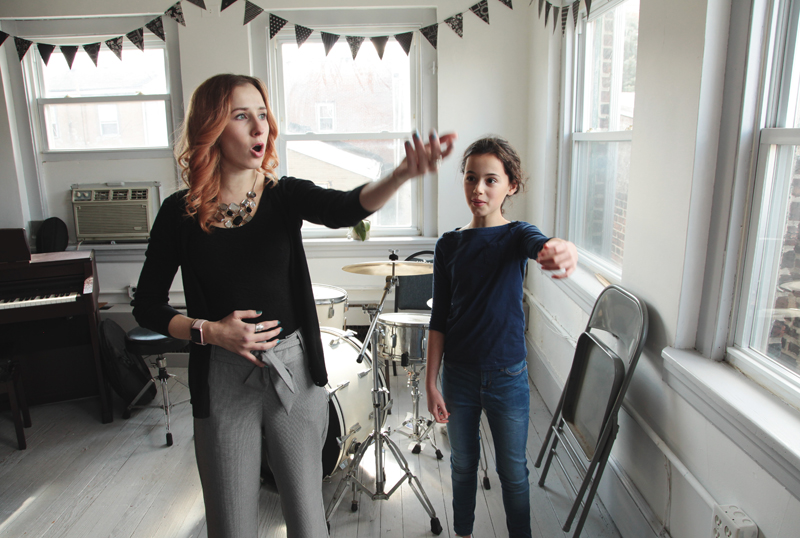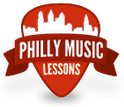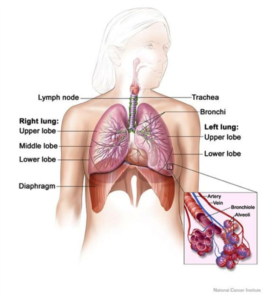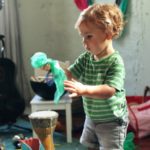
How To Sing From Your Diaphragm
“Sing from your diaphragm!” This phrase is almost mythical in the world of voice lessons. Somehow this concept has passed on to students who haven’t taken a single voice lesson, yet even students who have taken years of voice lessons may not know what it means. It doesn’t help either that some teachers say you should sing from your diaphragm while others say you shouldn’t. Who is right? And if you should, how do you do it?
What it Means to “Sing From Your Diaphragm”
The short answer to the question of “who is right,” when it comes to whether or not you should sing from your diaphragm is – both teachers are right! Obviously that requires a longer answer though.
Here is your diaphragm. As you can see, it sits right below your lungs. Think of it as an upside-down bowl-shaped muscle. Because of where it sits, when your lungs expand (when you breathe in), the diaphragm flattens out to make room for the now larger lungs. When your lungs contract (when you breathe out), the diaphragm curves up again. You can see this motion here.
Students often get lost right around now because what isn’t agreed upon is whether the diaphragm is a voluntary or involuntary muscle. In other words, do we move it consciously like our arms and legs, or does it move on its own like our hearts? For singers, this is largely irrelevant. Why? Because the point of a “diaphragmatic breath” is not whether or not we can move our diaphragm. It’s whether we can take an ideal breath to create a steady release of sound for singing. Therefore, focusing on the diaphragm itself misses the point.
Instead, students of singing should focus on how to feel their breath lower in their body, as opposed to breathing high into the chest. This is why the phrase “sing from your diaphragm” may be helpful for some students and teachers; it creates the imagery of a low breath and a steady release for some people. For others, it creates too much focus on something other than the task at hand.
So in short, you should think about singing from your diaphragm if it’s helpful to you. Any one of the following exercises can also help you “sing from your diaphragm” without the terminology.
Exercises to Sing From Your Diaphragm
The Milkshake Breath – When we drink a big, delicious milkshake from a straw, that milkshake goes right to our bellies. We can think of breathing in the same way. Imagine your favorite flavor of milkshake. Then, pretend to hold it in front of you and drink it all in. In this scenario, the milkshake will be your breath, and your goal is to fill your breath all the way to your belly. You can even put your hand on your belly if that helps you place it. If you don’t drink milkshakes, you can imagine whatever drink you’d like – as long as you’d normally drink it through a straw!
The Balloon Breath – When a balloon expands, it expands all the way around, not just to one part of the balloon. It does, however, start at the bottom of the balloon. Our lungs, ultimately, are like this as well. We want to use all of our abdominal muscles to create a steady release of the breath while singing, so we want to inhale with that in mind. Take a breath while imagining your torso is a balloon, and your goal is to fill up the whole balloon, starting from the bottom up.
Dog on a Hot Day – Have you ever seen a dog on a hot day, its tongue sticking out and its whole body working to breathe? We can use this for singing, too, although our breaths should concentrate on our belly. Stick your tongue out for an added tongue stretch, then release short breaths from your abdomen like a dog would on a hot day. This is a great exercise to introduce the release of breath along with the inhalation of breath.
The Snake Sound – To start working on the release of breath along with the intake, breathe in on four counts. Then immediately release the breath on a steady “ss” sound for eight counts. The “ss” sound should be strong but not forced, smooth and not jagged. This will encourage your body to release air as a stream rather than all at once, which is vital for singing.
There are numerous other exercises you can use to learn how to sing from your diaphragm (if you choose to think of it that way). These are my favorites because they all come with an organic understanding of how breath works without trying to manipulate our breath in other ways. Feel free to find your own creative ways to take lower breaths, too! Just make sure that no matter which exercises you use, you don’t do too many at once. These exercises can over oxygenate you and make you dizzy if done too many times, especially without practice. Try two or three a day at first for maybe a minute, tops. A little effort will go a long way to getting you towards diaphragmatic breaths in no time.
Kristen Seikaly
I teach voice. I started singing at a young age, first with school and community choirs, followed by high school concerts and musicals. I received my Bachelor's of Music at the University of Michigan in Vocal Performance, with a minor in French. Then, I earned my Master's of Music at Westminster Choir College in Voice Performance and Pedagogy. After my second degree, I moved to Philadelphia to pursue performance and teaching opportunities. I have performed in various Philadelphia venues including The Kimmel Center, The Academy of Music, and The Cathedral Basilica of Saints Peter and Paul. I have also participated in operatic productions with companies such as Opera Philadelphia, the Delaware Valley Opera Company, and Princeton Opera Alliance. I believe voice lessons should provide a thorough technical, musical, and emotional understanding of one’s voice. Comfortable singing always comes first, which begins with breathing and posture. I balance imagery and fact based on how a student learns and understands. Singing is joyful amongst all else. While I urge all of my students to reach certain technical goals, my main goal is to make sure the student is always achieving their personal goals and enjoying themselves at the same time.



